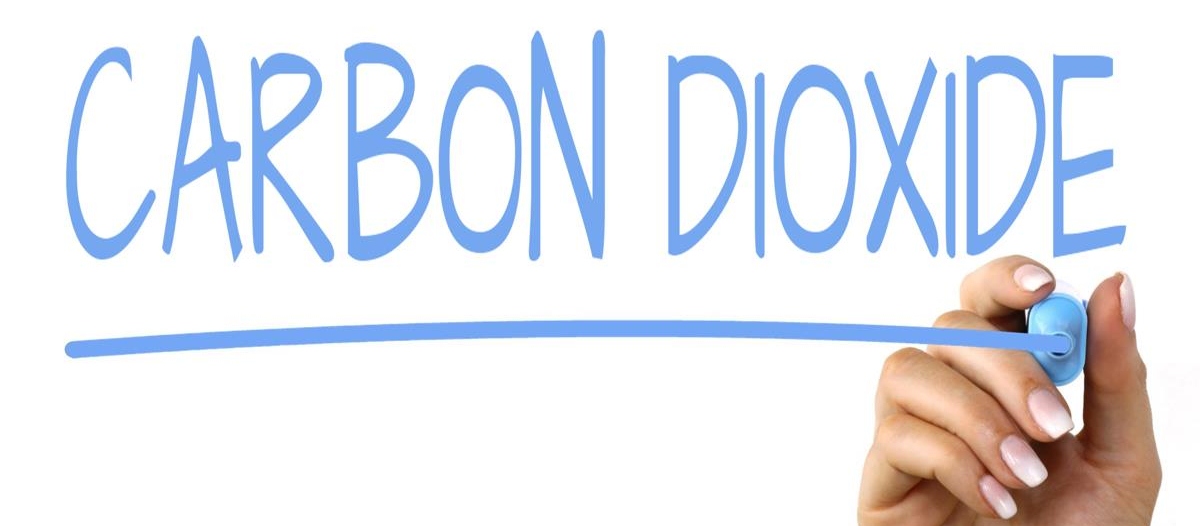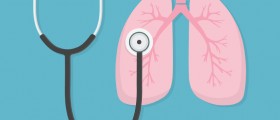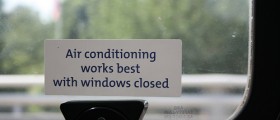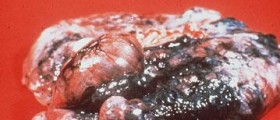Inhalation of high levels of carbon dioxide leads to a life-threatening condition known as hypercapnia or hypercarbia. Hypercapnia results in elevated levels of carbon dioxide in the blood, which is followed by symptoms like shortness of breath, confusion, and muscle twitches. Carbon dioxide poisoning can eventually cause death unless a victim is removed from the source of carbon dioxide and supplied with oxygen.
Causes of Carbon Dioxide Poisoning
Carbon dioxide is constantly produced by the body cells. It is a waste product of respiration and is released from the body by exhalation. If the body becomes unable to expel carbon dioxide or if levels of this gas in the air are too high, carbon dioxide poisoning takes place. The condition can be caused by re-breathing exhaled carbon dioxide, which can take place if one is sleeping in air-tight tents or with a head covered in blankets.
Hypercapnia can also occur due to exposure to an environment containing abnormally high levels of carbon dioxide, such as volcanic areas. Poorly ventilated, closed places like mine shafts and underground tunnels have high concentrations of carbon dioxide, hence people working in such places are susceptible to carbon dioxide poisoning.

Scuba divers are also at risk because of the potential malfunctioning of scuba breathing apparatus. Furthermore, hypercapnia can be caused by lung diseases like emphysema, hyperventilation, and neuromuscular disorders.
Symptoms of Carbon Dioxide Poisoning
Initially, carbon dioxide poisoning causes flushed skin, muscle twitches, elevated blood pressure, rapid breathing, shortness of breath, and reduced neural activity. Severe hypercapnia causes headache, lethargy, increased cardiac output, irregular heartbeat, panic, disorientation, convulsions, loss of consciousness, and, finally, death.
- Studies conducted in the 1980s showed that there were 89 deaths per year in the USA alone, during work in confined spaces; 22% occur during rescue efforts. A number has not decreased since.
- A recent study of the Occupational Safety and Health Administration (OSHA) in 2015 still estimated the number of deaths involving confined spaces to be around 90 per year. Unfortunately, the number of killed rescuers has risen to two thirds of those deaths. Carbon dioxide does not only cause asphyxiation by hypoxia but also acts as a toxicant. At high concentrations, it has been showed to cause unconsciousness almost instantaneously and respiratory arrest within 1 min.
- Other causes of carbon dioxide intoxication have been identified as well, such as dry ice. Dry ice undergoes sublimation (direct conversion from a solid state into a gas), and if it is warmed rapidly, large amounts of CO2 are generated, which is especially dangerous in closed environments.
- Dry ice intoxication might be accidental or deliberately as several suicide cases have been described. Massive geothermal emissions have also been described as a possible cause of CO2 intoxications, though in these cases, a relation with other toxic gasses inhaled might not be excluded.
- A literature review was performed where articles were sought in MEDLINE medical database via PubMed using the search terms: “dry ice poisoning,” “carbon dioxide poisoning,” “CO2 poisoning,” “carbon dioxide intoxication,” and “CO2 intoxication.” The references of the articles that were found were further evaluated to incorporate as much of the available literature as possible.
- Tests performed on mongrel dogs show the physiological effect of carbon dioxide on the body: after inhalation of a 50% CO2 and 50% air mixture, respiratory movement increased for about 2 min, and then, it decreased for 30–90 min. Hill and Flack showed that CO2 concentrations up to 35% have an exciting effect upon both circulation and respiration, but those beyond 35% are depressant upon them.
- Carbon dioxide at low concentration has little, if any, toxicological effects. At higher concentrations (>5%), it causes the development of hypercapnia and respiratory acidosis. Severe acidosis increases the effects of parasympathetic nervous activity, possibly by interfering the hydrolysis of acetylcholine by acetylcholinesterase, resulting in a depression of the respiration and the circulation.
Treatment for Carbon Dioxide Poisoning
People working at places with high concentrations of carbon dioxide, as well as those who are susceptible to hypercapnia due to certain medical conditions, must be aware of the potential poisoning and its symptoms. This can help in the prevention of hypercapnia.
If the poisoning takes place, you must also know how to react. A victim of hypercapnia should be taken out on fresh air. If hypercapnia is mild, the symptoms will resolve, and the victim will recover. On the other hand, in case of severe carbon dioxide poisoning a victim must be taken to the emergency room. It is vital to make sure the victim’s air duct is not obstructed.
If continuous positive airway pressure (CPAP) is available, place the mask on the victim’s mouth to restore normal breathing. The victim must also receive medications that help to improve the functions of the lungs. The victim must receive a sufficient supply of oxygen. This is normally taken care of in hospitals, but you can use portable oxygen tents or canisters of breathable oxygen for the purpose.
- www.cdc.gov/niosh/npg/npgd0103.html
- pubmed.ncbi.nlm.nih.gov/16499405/
- Photo courtesy of Nick Youngson by The Blue Diamond Gallery: www.thebluediamondgallery.com/handwriting/c/carbon-dioxide.html

















Your thoughts on this
Loading...